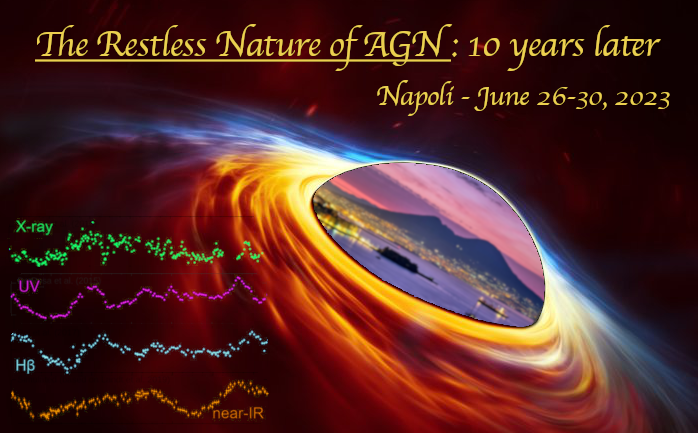Speaker
Description
While the unified model of quasar structure provides a concise description of diverse spectra, the physical origins of components (e.g., broad line region, dust torus, and narrow line region) are unresolved. To learn more about the structure of quasars, we have chosen to study Changing-State Quasars (also known as Changing-Look Quasars) as they offer the opportunity to observe structural changes that occur during state transitions. This can give us insight into the origins of quasar structure, including the BLR.
We aimed to understand the central core structure of one of the Changing-State Quasar and how it changes before and after the state transition.
As the research target, we selected SDSS J125809.31+351943.0, which exhibited one of the most significant variations ever (Nagoshi+21). We performed reverberation mapping with optical spectroscopy to investigate the structure of the broad line region and to measure the black hole mass. We also measured the time-lag between the WISE light curve and optical light curve to estimate the size of the dust torus. In addition, we compared optical to X-ray spectral indices ($\alpha_{\rm{ox}}$) before and after the state transition to investigate the structure difference of the accretion disk.
The results of the reverberation mapping show that the Eddington ratio crossed the value of 0.01 before and after state transition for the constant black hole mass of $10^{9.46^{+0.15}_{-0.19}}\rm{M_\odot}$. The variations in $\alpha_{\rm{ox}}$ and the Eddington ratio were consistent with those predicted from the instability of the accretion disk caused by hydrogen ionization.
In the viewpoint of broad line region, we confirmed the existence of two distinct rotating/inflowing components located near the dust torus. We discuss the origin of these line-emitting regions. We suggest that these components originate from rotating/inflowimg gases located near the dust torus generated by different processes.

